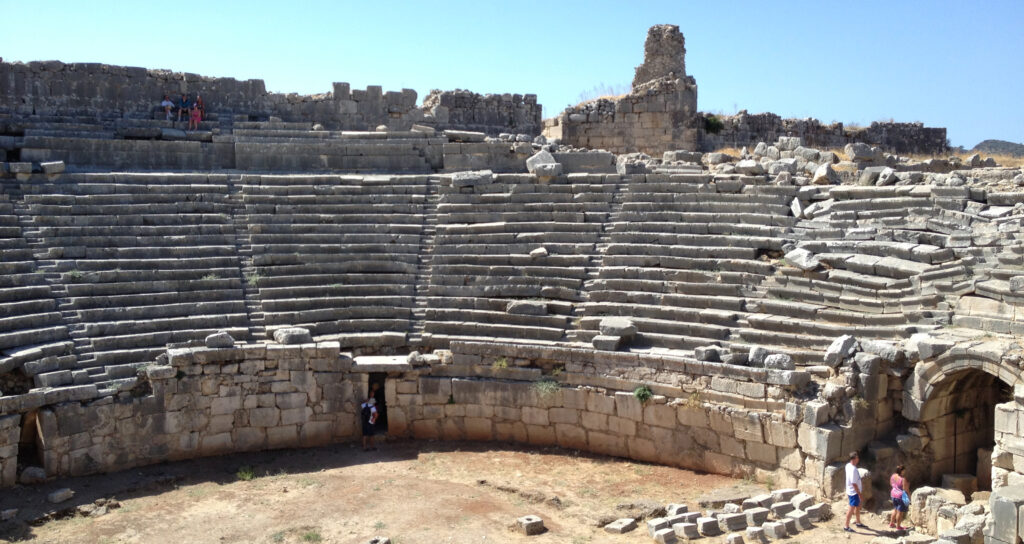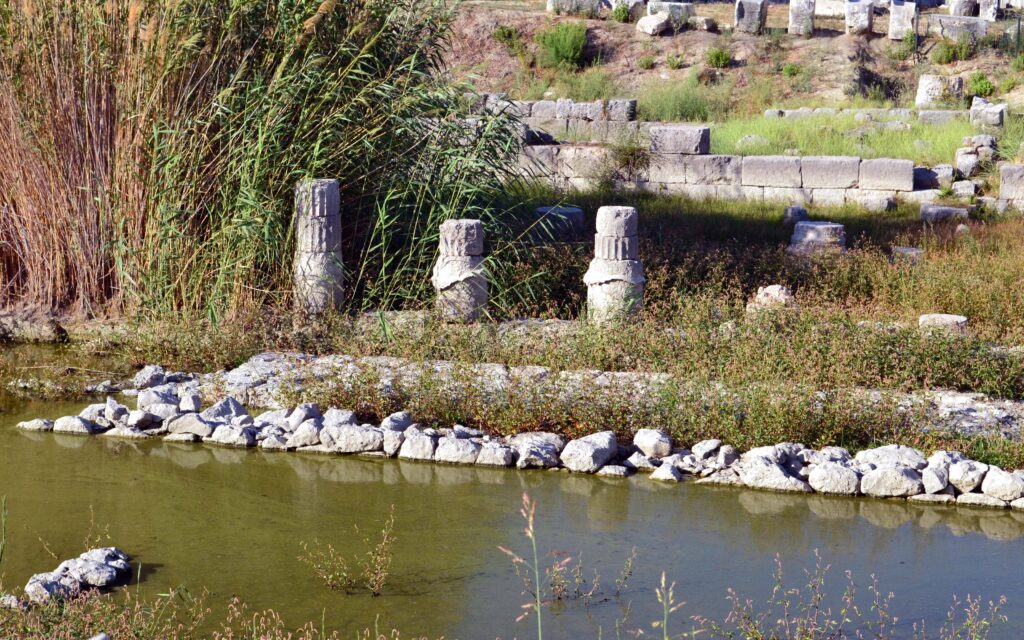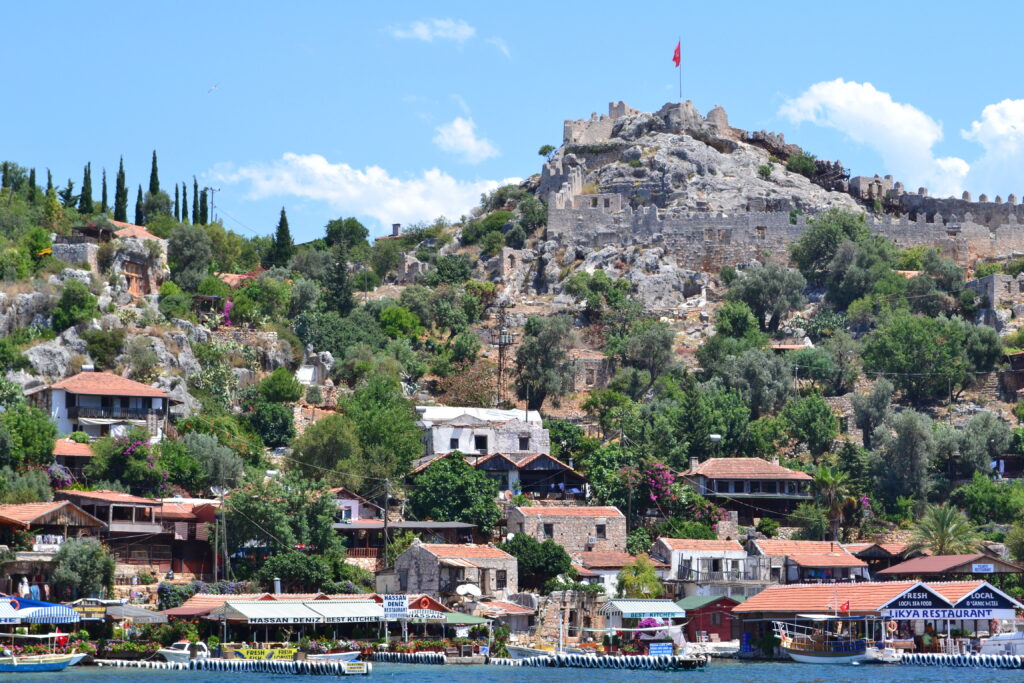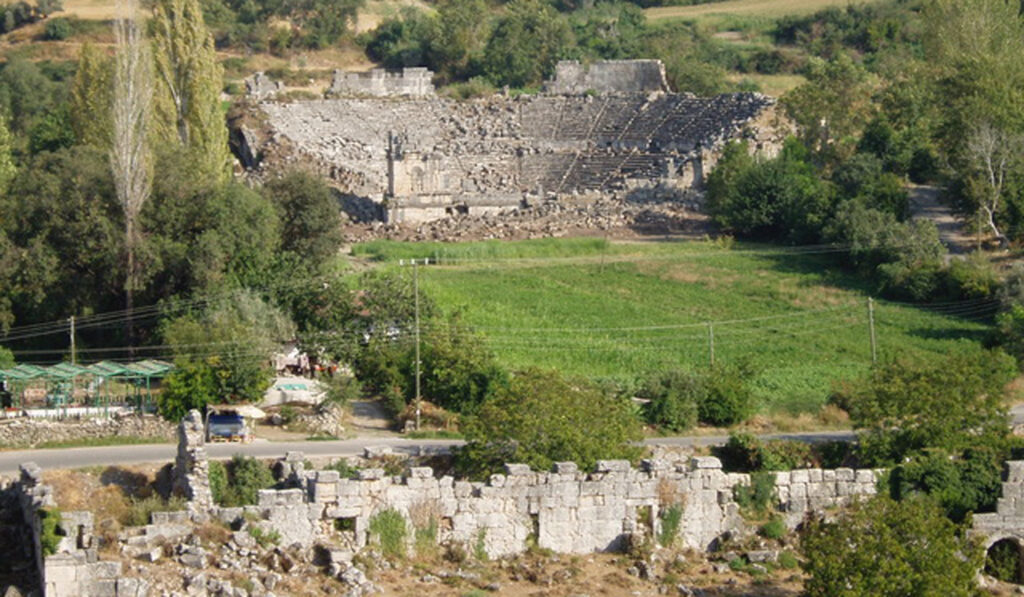Xanthos
Most trips to Saklikent, whether on a tour bus or the local dolmus, will stop first at Xanthos to allow a visit to this ancient site, which was once the hilltop capital of Lycia. The city suffered several attacks over the centuries – the last by Brutus in 42 BC when, rather than face capture, the citizens set fire to their homes and committed collective suicide by throwing themselves into the fire. Of interest are the vaulted sarcophagi mounted on columns from the 4th century BC and earlier, the ‘Obelisk Tomb’, a Byzantine church and monastery and a Roman ampitheatre. Xanthos is on Unesco’s World Heritage List.


Letoon
Some 6km from Xanthos are the remains of the three temples dedicated to the Titan goddess Leto and her children Apollo and Artemis. Many of the remains are half submerged by water.

Patara
According to mythology, Apollo was born in Patara, although the town is perhaps most famous for being the birthplace of St Nicholas (Santa Claus). It also has some interesting archeological remains, including the splendid triple gateway through which you enter Patara beach, the large Granary of Hadrian, and a well-preserved ampitheatre from the 2nd century, although this is partially buried in sand. You can get there by local dolmus.

Kekova
Some 30km east of Kas lies Kale with its medieval castle, and the offshore island of Kekova which was once an anchor point for Romans and pirates and often described as the prettiest ancient site along the Lycian coast. The towns of Aperloi, Simena and Teimiussa, which once thrived here, can now be seen rising from the sea. A boat trip around its shores and in the inlet separating it from the coast is the best way to see these enchanting ruins: stairways, streets, pillars, house walls and stone sarcophagi, the most famous of which sits in the harbour entrance.


Tlos
Tlos is the home of the legendary Pegasus and has some excellent rock tombs including the ‘Tomb of Bellerophone’, the castle of notorious Chief Bloody Ali, an amphitheatre and the remains of a Roman gymnasium and bath converted into a Byzantine basilica. Inside is the ‘Yedi Kapı’ (Seven Gates), a dramatic set of seven arches overlooking a lush valley. Tlos was rediscovered by Charles Fellows in 1838, and visited a little later by the explorer Spratt, who thought “a grander site for a great city could scarcely have been selected in all Lycia”.


Myra
In Byzantine, Myra was promoted to the capital of Lycia but by 809 AD Harun El Rashid had conquered the city and it was gradually abandoned. Myra has a remarkable series of rock tombs dating back to the Lycian era. The centerpiece of the site is a Greco-Roman ampitheatre built against a cliff. The area is littered with stone carvings from the proscenium, including two theatre masks.
Demre (Kale)
St Nicholas (Santa Claus) is Demre’s most famous citizen. Legend has it that he would drop small bags of gold coins down the chimneys of the houses of poor girls who were old enough to marry but had no dowry. His church is situated in the centre of Demre.
